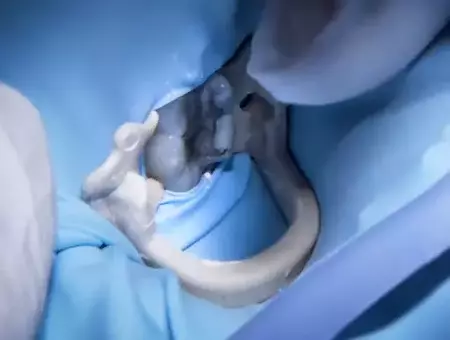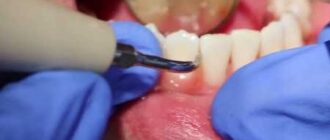Cavities are a dental disease characterized by the gradual destruction of tooth tissue. If left untreated, tooth decay can cause serious complications. None of the stages of decay can be cured by itself, and if the tooth begins to decay, it is impossible to stop the process without the help of a specialist.
Cavities, like any other disease, develop gradually. Caries disease does not occur all of a sudden, it takes time and favorable factors to develop even the initial caries, because caries disease is caused by a group of factors, not one cause. The stages of caries are characterized by the depth of penetration into the tooth tissue and the degree of destruction. If left untreated, decay is irreversible and can lead to the development of complications, tooth loss, and tooth decay on the neighboring teeth.
Cavities symptoms
Cavities has several striking manifestations. In the initial stages of the disease, the symptoms are almost imperceptible, they do not bother the patient and do not cause discomfort. As time passes and the disease progresses, the manifestations worsen, the intensity of symptoms increases, there are additional external and internal signs that are noticeable to the patient and those around him.
The initial stage – a change in the color and structure of the tooth
The change in the color of the tooth indicates the beginning of the pathological process. Caries in its initial form is characterized by almost imperceptible changes in the structure of the tooth surface – the appearance of lines, grooves, irregularities, roughnesses, and also the appearance of white, yellowish or dark spots on the tooth enamel. Changes in the color of dental tissue is a sign of demineralization of enamel, that is, its gradual destruction, if the resulting spots are brown or black in color – the demineralization process has passed on to the dentin.
Cavity Formation
The formation of cavities or as we call holes in the dental tissue is the main sign of dental caries. In the initial stages of the disease formation cavities are barely noticeable and cause little discomfort. As caries progresses, the cavities are easy to feel with the tongue and change color. The cavities are also sensitive to temperature changes. In some cases, at this stage, patients are often bothered by a nagging toothache.
Dentin lesion
If you continue to ignore cavities and discoloration, decay is on its way to the next stage, dentin. This symptom cannot be detected independently. The lesion and softening of dentin can only be seen during a dental workup. The examination reveals changes in the structure of the tooth surface, unevenness and roughness, and softening of dentin. Importantly, in the case of caries disease, diagnostic probing is painful for the patient.
Increased tooth sensitivity
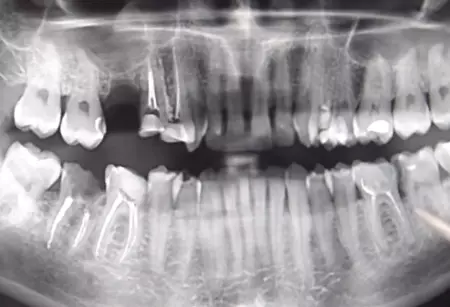
One of the most striking manifestations of dental caries is the increased sensitivity of the teeth to the temperature and taste of food. Tooth enamel damage causes a strong reaction to cold and hot foods and drinks, and is often accompanied by a sharp pain when sugary foods are consumed. The severity of the symptom varies depending on the level of damage to the tooth enamel and the severity of the dental caries. Sometimes tooth sensitivity occurs not only with meals, but also with changes in the temperature of the environment. With advanced dental caries, the affected tooth may react with painfulness when moving from a warm room to the street and back. Brushing with a regular toothbrush can also cause discomfort and soreness.
Discomfort while eating
In addition to the tooth temperature sensitivity, the very process of chewing food caused by caries causes discomfort or pain. The patient gets the impression that the tooth is being pierced with pain all the way to the root; the pain can be described as sharp, sharp, intense, even intolerable. However, when the irritant disappears, it passes fairly quickly on its own.
Toothache
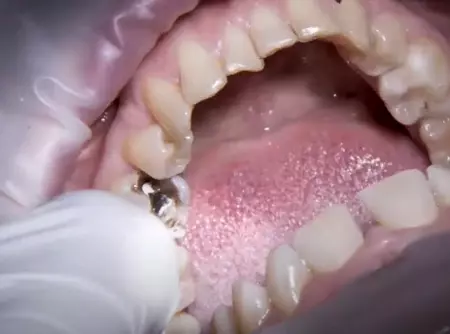
The development of dental caries may result in toothache of varying severity (from a slight aching to a severe acute pain), without any apparent reason. Painful sensations occur suddenly at any time of the day, regardless of meals or activities. Toothache in this case is easily relieved by painkillers or passes on its own after some time.
Having bad breath
Bad breath is a constant companion of patients suffering from carious disease. The nature and intensity of the odor can vary and depends entirely on the amount and degree of carious disease of the teeth. It is noteworthy that in the vast majority of cases, the patient himself does not smell unpleasant.
Stain
The initial stage of caries disease in the form of a light or dark spot is considered the easiest to treat, because it does not require extensive dental work and is usually cured by several procedures to restore the tooth enamel. In some cases, it is difficult to identify caries on your own at the stain stage because of the location of the tooth.
Superficial decay
A superficial dental decay destroys tooth enamel and affects the upper dentin layer. The structure of the tooth surface changes – the damaged area of the tooth tissue becomes uneven, rough, and sometimes grooves or lines appear on it. At this stage, the damaged tooth becomes more sensitive and reacts to temperature changes.
Middle Cavity
Caries in the middle stage is characterized by damage to the deeper layers of dentin. Caries at this stage causes increased tooth sensitivity, sharp pain when eating, and for no apparent reason.
Deep cavities
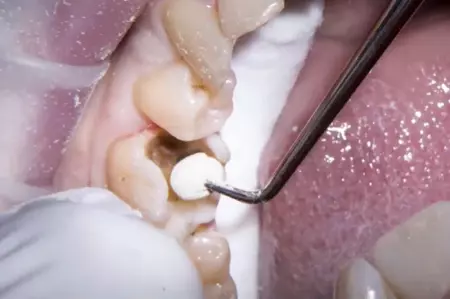
Deep dental caries is a complex form of the disease, characterized by a tendency to progress quickly and develop complications. When the deep layers of the tooth tissue are affected, the disease usually spreads to the dental pulp. Deep cavities are manifested by an acute pain that occurs at any time of the day, regardless of the patient’s activity, for no apparent reason. Sometimes the pain can last up to several hours, varying in intensity.
How to detect caries on your own
In addition to regular visits to the dental clinic twice a year for preventive purposes and regular home prophylaxis of caries disease, self-monitoring is not unreasonable. Early detection of signs of tooth enamel decay is the key to quick and effective treatment, and the best way to prevent disease progression.
Do a daily inspection of the visible surface of the teeth immediately after the dental hygiene treatment once a day. The timing is not important as long as you can give yourself enough time to do so. Carefully inspect all visible teeth for changes in surface structure: white, yellowish, brown or black stains; striations, grooves, indentations, irregularities and roughnesses.
If you notice even a small stain that is different in color from normal tooth tissue, try to determine the possible source of the stain: remember if you ate any staining foods that day (berries, strong coffee or tea, spices, seasonings, etc.), if you used new oral care products (toothpaste, mouthwash, bleaching or fortifying agents, etc.). If the stain you find has not disappeared after brushing your teeth again the next day, it is a reason to see your doctor.
Pay attention to the sensitivity of your teeth. Healthy tooth enamel without damage will prevent you from experiencing discomfort or painful sensations when drinking hot or cold drinks. Even if the discomfort is not very uncomfortable or lasts only a few seconds, you should still visit your dentist as soon as possible.
Particular attention should be paid to teeth that have previously undergone dental treatment. There are forms of tooth decay that develop under a filling, so if you suddenly feel pain in a tooth that has already been treated, visit your dentist right away. Tooth discoloration, chipping of the filling or roughness on the surface of the filling are also reasons to go to the dentist.
Trauma to the tooth is an urgent reason to visit the dentist. If due to chemical or mechanical stress a part of the tooth has chipped or cracked, the surface structure or color of the tooth tissue has changed – it is important to see a dentist as soon as possible. Regardless of the location of the tooth, even minor damage can lead to disastrous consequences. The most dangerous situations are when an injury results in the loss of a large portion of the tooth, or when the tooth is fractured along its growth from edge to root.
Interesting articles on our website about cavities:
- how to reverse cavities;
- tooth cavity filling – procedure and cost;
- how to relief tooth cavity pain;
- why does my tooth hurt when I lay down;
- how to treat severe tooth decay;
- baby bottle tooth decay;
- tooth turning black.
Conclusion
If you find one of the above symptoms of tooth decay, see a dentist right away. It will save you time and money. By delaying your visit to the dentist, you make tooth decay worse and it can become quite expensive to treat.
